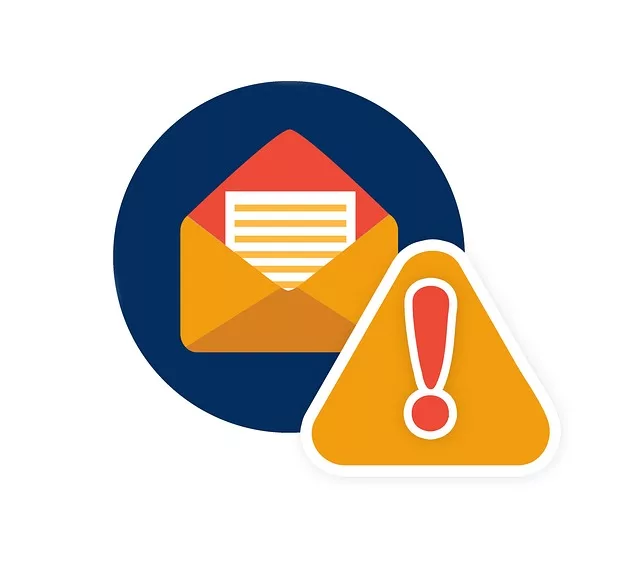Email marketing remains one of the most powerful tools in the affiliate marketer’s arsenal. It offers direct access to your audience, helps you build long-term relationships, and drives consistent traffic. But there’s one major obstacle between you and your reader’s inbox: spam filters.
You’ve crafted the perfect email, full of helpful content and a compelling call to action, only to find it buried in the spam folder, never to be seen or clicked. It’s a frustrating scenario, especially for affiliate marketers who rely on email to nurture leads and generate conversions.
Whether you’re promoting programs like Wealthy Affiliate or any other affiliate offers, avoiding spam filters is critical for success. In this guide, we’ll dive deep into the mechanics of spam detection, common pitfalls that trigger filters, and the strategic steps you can take to ensure your emails reach the inbox and get read.
Understanding Spam Filters and How They Work
Understanding how spam filters operate can help avoid getting caught in spam traps. Email service providers (ESPs), such as Gmail, Outlook, and Yahoo, use sophisticated algorithms to evaluate incoming messages. They analyze a combination of content, sender reputation, engagement metrics, and technical authentication to decide whether an email is legitimate or suspicious.
There’s no single rulebook, but filters look for red flags like overly promotional language, spammy links, suspicious attachments, or poor sender history. They aim to protect users from scams and unwanted emails, and unfortunately, even well-meaning affiliate marketers can get caught in the crossfire.
Affiliate emails, by nature, include promotional content and external link elements scrutinized closely. That’s why it’s crucial to approach your email marketing with strategy and precision. Understanding how to work and avoid them is essential for any serious affiliate marketer.


The Impact of Spam Filters on Affiliate Marketing
For affiliate marketers, being flagged as spam doesn’t just reduce open rates, it can cripple your entire funnel. If your welcome email gets filtered, new subscribers may never engage. If your offers don’t land in the inbox, your conversions plummet. Worse, repeated spam complaints can damage your sender reputation permanently.
This is especially relevant when promoting platforms like Wealthy Affiliate, which may require multiple touchpoints before a lead converts. If your educational series, product comparisons, or free training invitations aren’t seen, your audience will remain cold, and your efforts will go to waste.
Fortunately, spam filters aren’t unbeatable. You can bypass them with careful planning while delivering impactful messages that drive affiliate revenue.
Building a Strong Foundation: List Hygiene and Consent
One of the most significant mistakes affiliate marketers make is neglecting the quality of their email list. Spam filters are susceptible to unsolicited emails, and using low-quality or purchased lists is a fast track to trouble.
Start by ensuring every subscriber on your list has given explicit permission to receive emails from you. This typically occurs through a sign-up form, lead magnet, or content upgrade, where users voluntarily enter their email address. Double opt-in (where users confirm their subscription via email) is even better for deliverability.
Clean your list regularly by removing inactive subscribers. If someone hasn’t opened your emails in 60 to 90 days, consider a re-engagement campaign or remove them from your list. High bounce rates and low engagement signal to ESPs that your messages are unwanted, raising your chances of being marked as spam.

Authenticating Your Domain and Improving Technical Setup
Behind every email is a set of technical identifiers spam filters use to verify your legitimacy. If you’re using a domain like yourname@yourwebsite.com, you need to ensure proper authentication with the following protocols:
- SPF (Sender Policy Framework): Verifies that the sending server can send emails on your domain’s behalf.
- DKIM (DomainKeys Identified Mail): Adds a digital signature to prove the email hasn’t been tampered with.
- DMARC (Domain-based Message Authentication, Reporting, and Conformance): Tells receiving servers how to handle unauthenticated mail from your domain.
Most modern email marketing services, such as ConvertKit, MailerLite, or ActiveCampaign, will guide you through setting these up. These steps are non-negotiable if you’re promoting Wealthy Affiliate and using your brand domain. They show ESPs you’re a legitimate sender and drastically improve deliverability.
Crafting Emails That Don’t Look Like Spam
What and how you write matter as much as the technical setup. Spam filters analyze subject lines, body content, and formatting to determine intent.
Let’s break down what to avoid and what to do instead.
Avoid Spam Trigger Words
Certain words and phrases scream “spam” to filters. These include:
- “Make money fast.”
- “100% free.”
- “Risk-free”
- “Buy now.”
- “Guaranteed income”
- “Click here!”
While using these terms in affiliate marketing may be tempting, there are red flags. This doesn’t mean you can’t promote an opportunity like Wealthy Affiliate. It just means you need to do so using natural, conversational language.
Instead of saying “Earn money online guaranteed!”, try something like:
“Here’s how I started building consistent income through affiliate marketing.”
You’re still conveying the benefit without sounding like a get-rich-quick scheme.
Write Like a Human
Filters are good at detecting robotic or formulaic language. Your emails should read like a genuine message from one person to another. Use contractions, ask questions, share stories, and be transparent.
Here’s an example of a bad opening:
“Dear user, this is your final opportunity to access our 100% FREE wealth-building system!”
Now here’s a better version:
“Hey John, I wanted to share what finally helped me stop spinning my wheels with affiliate marketing…”
The second version feels personal, authentic, and far less likely to be flagged.
Format for Readability
Emails packed with bold text, multiple font sizes, colored fonts, or large images with little text are common in spam messages. Keep your formatting clean and consistent.
Use a single font family, stick to basic colors (black or dark gray text on a white background), and ensure your email has a solid balance of text and links. If you use images, always include alt text and never rely on them to convey your main message.
Plain-text emails often perform best in terms of deliverability and engagement. They may not be flashy, but they feel more like honest communication, and that’s what inbox providers value.
Handling Affiliate Links the Right Way
Affiliate links are a core part of your email strategy, but can also be a spam magnet. Some platforms flag emails with affiliate URLs, especially if they’re cloaked, shortened, or redirect through multiple servers.
Here’s how to minimize risk:
- Use direct, clean links where possible. When promoting Wealthy Affiliate, use your official tracking link instead of a third-party redirect or URL shortener.
- Don’t overstuff your email with links. One or two links per message is plenty. Too many can trigger spam warnings.
- Consider placing the main call to action at the end of your message, rather than at the top. Filters pay close attention to early content.
- Anchor your links in natural language, not overly promotional phrases. Instead of “CLICK HERE NOW,” write something like “You can check out the full platform here if you’re curious.”

Building Engagement Through Valuable Content
Spam filters consider engagement a significant signal of email quality. The more people open, click, and reply to your messages, the better your sender reputation will become, and the more likely your emails will reach the inbox.
This is why providing value-first content is essential. Every email should offer something valuable: a tip, a story, a tool, or a free resource. For example, if you’re nurturing leads for Wealthy Affiliate, your email might include:
- A step-by-step breakdown of how to choose a profitable niche
- A personal story about overcoming the overwhelm of affiliate marketing
- A tutorial on setting up a beginner-friendly WordPress site
- A comparison between Wealthy Affiliate and other training platforms
When emails help people, they engage, reply, and look forward to your following message and spam filter notice.
Encourage Whitelisting and Replies
Another clever tactic is to ask your subscribers to add your email address to their contact list (whitelisting). You can include this request in your welcome email or as a P.S. note. Something like:
“To make sure you don’t miss future tips, add me to your contacts. That way, my emails don’t get lost in spam.”
Also, encourage replies. You might ask, “What’s your biggest challenge with starting affiliate marketing?” When readers reply, it signals ESPs that your emails are wanted, improving deliverability.
Monitor Your Deliverability Metrics
If you’re serious about email marketing, keep a close eye on your data. Most email marketing platforms provide insights like:
- Open rates
- Click-through rates
- Bounce rates
- Spam complaints
If your open rates are consistently below 15% or your bounce/spam complaint rates are above industry averages, something needs to be adjusted.
You can also use free tools like Mail-Tester.com or GlockApps to test your email content and sender reputation before hitting send. These tools provide you with a spam score and actionable suggestions to help you improve.
Earning Long-Term Trust With Your List
Ultimately, avoiding spam filters isn’t about tricking the system; it’s about creating genuine value, building trust, and humanly communicating with your audience.
Everything changes when you treat your list as a community rather than a sales target. You write better emails. Your readers respond more. Your reputation grows.
Trust is everything in the affiliate world, especially when promoting long-term programs like Wealthy Affiliate. You’re not just trying to make a one-time sale but guiding someone on a journey. Your emails are the bridge.
Don’t burn that bridge with spammy tactics. Build it with integrity, consistency, and care.

